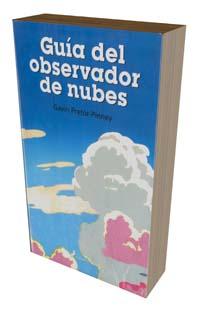An apology for clouds

Life would be very boring if every day we had to endure the blue sky. "Clouds," explains English Gavin Pretor-Pinney, "are the most beautiful show in the world." In nature there is nothing that produces so much drama.
These ideas were presented by Pretor-Pinney in his lectures, and given the large number of attendees to them, it occurred to him to create an association of cloud observers: Cloud Appreciation Society (www.cloudappreciationsociety.org).
His companions sent him photos of the clouds, good and surprising photos. Over time the material received was excessive to keep the website free of charge and a small amount of money began to be charged to new members.
Success came to Pretor-Pinney as fast as a cluster, partly thanks to the association and the book he wrote on the clouds, thanks to the guidance of the cloud observer.
The book is an informative text on meteorology that presents the different types of clouds and explains their origin and evolution. But it's something else. Narrates anecdotes and stories related to this type of cloud. It tells, for example, the story of Lieutenant Colonel William Rankin, the only one who has parachuted through a cluster. He suffered an accident on a flight and had to jump from 16,000 meters high and cross the cloud. Kumuluninbos are the clouds that cause the most violent storms.
In addition, the book analyzes the symbols they have used in BBC news reports on weather forecasting. The first were created by designer Mark Allen in 1975. For Pretor-Pinney, it is no wonder that Allen took the image of a cluster as a symbol of the clouds.
It also analyzes the relationship between art and clouds. For example, the English painter Constable is the one who best painted the clouds. He also talks about cinema on several occasions, as in Encounters in the Third Phase, the character of actor Richard Dreyfuss explains the birth of the stratomulus, something that is also collected in the book.
The book is organized by clouds. Assign each chapter to a certain type of cloud and create series of chapters based on its atmospheric distribution: low, medium and high clouds.
It is a very special book, easy to read, that mixes science and science. He has been a best-seller in the UK and then has spread to the world. The Spanish edition, Cloud Objector Guide, dates from 2007.





